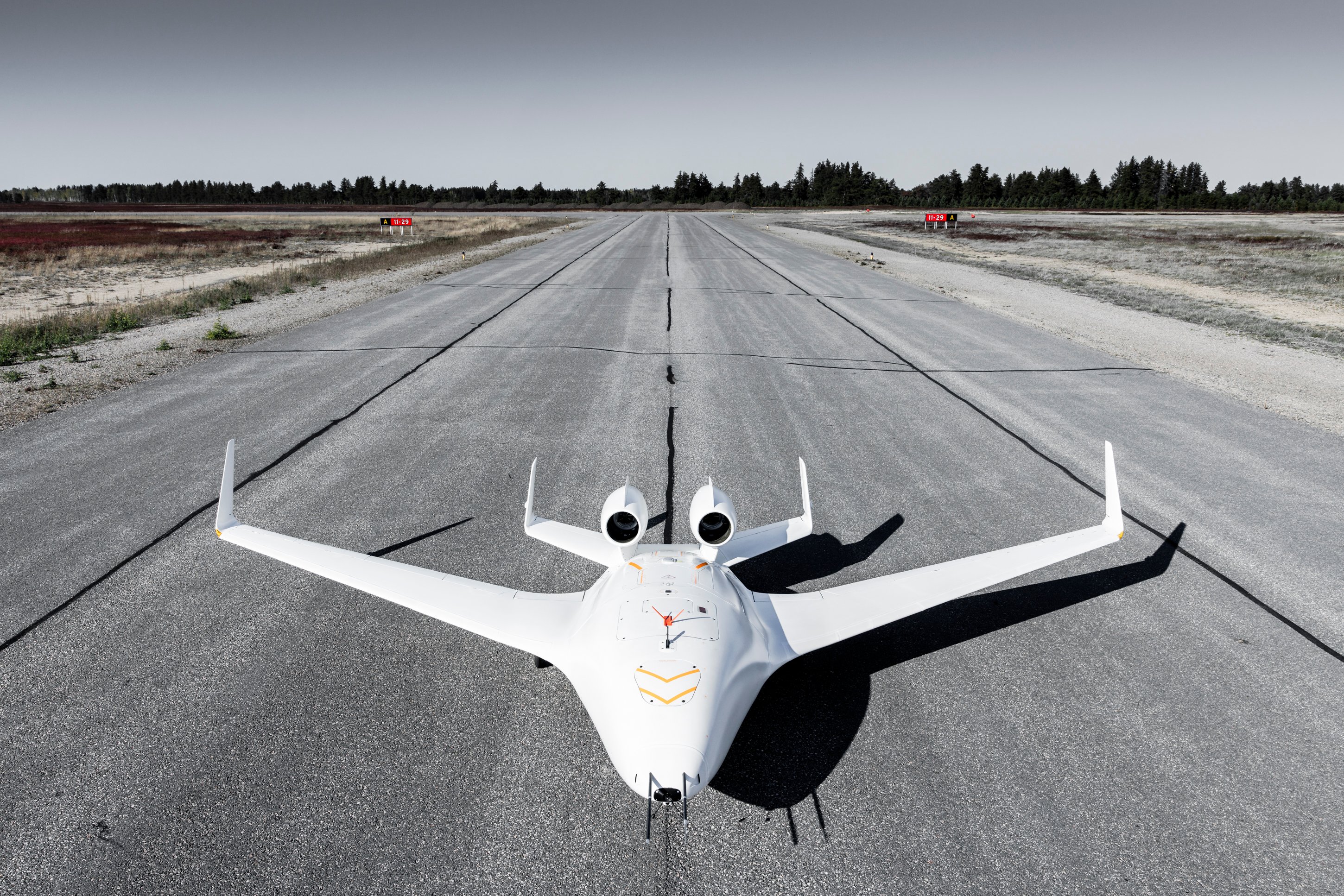Click Here to View This Page on Production Frontend
Click Here to Export Node Content
Click Here to View Printer-Friendly Version (Raw Backend)
Note: front-end display has links to styled print versions.
Content Node ID: 420194
Bombardier’s EcoJet Phase 2 technology demonstrator has now flown 10 times and is generating large amounts of data as part of efforts to develop technologies that could reduce emissions of a Global 6000-sized business jet by 50 percent. The blended-wing-body (BWB) aircraft—which has roughly 16 percent of the wing span of a Global 6000—is flying from an undisclosed North American location.
The 18-foot-wingspan air vehicle was revealed at the EBACE business aviation show in May, having made its first flight in late 2022. It is the latest test vehicle of a research program that began 15 years ago and initially resulted in an eight-foot-wingspan air vehicle that represented a notional 7 percent scale model of a potential BWB business jet configuration.
That Phase 1 vehicle provided enough data for Bombardier to progress to the Phase 2 aircraft, with the aim of further refining the data and making it more applicable to the design of a full-size aircraft.
The EcoJet BWB concept is seen as having enormous promise in turns of fuel saving and also offers the potential for carrying large volumes of fuel, which may be an important advantage if fuels with lower power densities than jet-A are selected.
Bombardier suggests that the aerodynamic efficiencies of a BWB could account for around 20 percent of the desired fuel savings, with new propulsion technologies accounting for a similar saving. The remaining 10 percent of the 50 percent goal would come from other technological advances, such as advanced weight-saving techniques and materials.
The larger size of the Phase 2 vehicle allows the control surfaces and systems to be more representative of a full-size aircraft and also permits the demonstrator to fly further, faster, and higher. Additionally, the larger platform is better suited to the testing of realistic full-size aircraft control laws and also for examining critical corners of the flight envelope, Bombardier said.
The flying model is powered by a pair of Bombardier-modified off-the-shelf jet engines normally used by the radio-controlled model flyers. Meanwhile, the airframe was developed and built in collaboration with industrial partners and academic institutions. The vehicle is radio-controlled but also has autonomous features, primarily to facilitate the gathering of repeatable data.
The Phase 2 work is in the early stages and the design and architecture are likely to change and be optimized through a number of iterations as more data are gathered and more lessons are learned. The flight demonstrations are expected to run for at least two years and potentially up to four years.
Lessons Learned Could be Incorporated With Current Bizjets
At present, Bombardier has no detailed plans concerning the program’s immediate direction or indeed what propulsion concept might be selected for a full-scale BWB business jet.
Stephen McCullough, Bombardier senior v-p of engineering and product development, noted, “We know where we want to be at the end of Phase 2...but we’re going to let the physics drive us,” adding that the engineers are “under no constraints.” Possibilities for future development could include a larger demonstrator that examines potential internal configurations.
In the meantime, some of the technologies being explored by the EcoJet could also find their way into the current Challenger and Global business jet families to generate fuel savings and reduce emissions.
Earlier this year, the U.S. Air Force awarded JetZero a contract for development work on its blended-wing-body concept that could be applied to large military aircraft, such as refueling platforms. The start-up, which is partnered with Northrop Grumman and its Scaled Composites division, also believes the design could form the basis for a future airliner.
